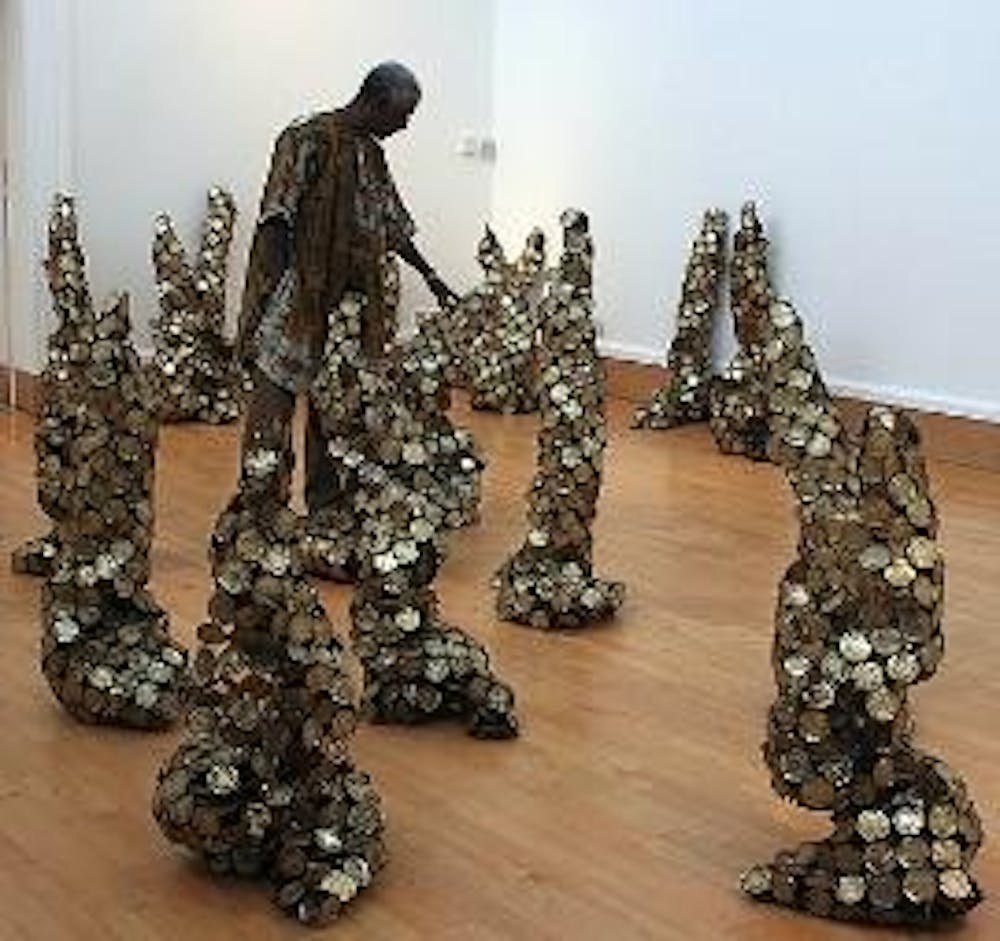Ghanaian artist El Anatsui recently opened March 13 the exhibit "Gawu" at the National Museum of African Art, which showcases how he transforms the metal refuse of his continent into breathtaking and flexible large-scale sculptures.
"Gawu" means both "metal" and "a fashioned cloak" in the artist's native language, Ewe. The multi-faceted meaning of this word tells the shape of this exhibit: Anatsui brings new, more organic forms to discarded metal by transforming it into movable and textured sculptures. From prismatic metal-made tapestries to a haunting forest of milk-tin trees, the exhibit contemplates the cost of consumption while challenging traditional perceptions of beauty.
A closer look at Anatsui's sculptures reveals that the fabric of his art once could be found in a trash dump. Milk tins, copper wire, fragments of metal gleaming in the museum light are his medium, but he transforms them and uses them in contradictory ways.
The artist experimented with more traditional materials, including paint and wood, in earlier works, but the chosen medium for his recent sculptures is the point of the exhibit. Anatsui demands a new explanation for trash: What does our waste say about us?
For the aptly named "Wastepaper Bag," discarded print plates that once printed newspapers sculpt an 8-foot tall paper bag. The structure seems to grow organically from the human history behind it - old obituaries and newspaper advertisements stitch together the fabric of the bag. According to the museum's background information on the piece, Anatsui intended it as a statement about the disposable nature of human life. This piece haunts so acutely, however, because of the way he sculpts the most ephemeral of all - trash - into something beautiful and permanent.
Anatsui, according to the National Museum of African Art, wanted to use metal unexpectedly and change its image from stiff and rigid to pliable and soft. Stitched-together alcohol bottle caps create the enormous "Skin of Earth," a metal tapestry almost covering an entire exhibit wall. The sculpture immediately appears like a giant piece of fabric, with soft folds rippling contradictorily through the metal sheath.
His most powerful work in the exhibit, however, combines the immense but flexible quality of the earth with the haunting contemplation of "Bag." In "Peak Project," discarded milk tin tops sewn together with copper wire constitute a forest of miniature trees. The immediate appearance of "Peak" is that of a ghost forest. With their flexible, wire-based structure, the skeletal trees are prophetic: These dead trees will be what is left of the natural if rampant consumerism does not cease.
The museum information on the sculpture explains that West Africa increasingly imports products from Europe and the United States, but that the region's limited recycling processes cannot handle the inevitable waste. The implication of this imported consumerism and neglect of the natural world plays out powerfully in "Peak."
Anatsui has received international acclaim for his experimental sculpture outside of this exhibit, according to the National Museum of African Art. His work is clearly rooted in the 1960s and '70s when he developed as an artist and post-independence art movements bloomed in West Africa. Although he grew up in Ghana, he now teaches at the University of Nigeria, Nsukka.
His exhibit at the National Museum of African Art continues until Sept. 2, and admission is free. The museum is located on the National Mall between the Smithsonian Castle and the Freer Gallery and is open daily from 10 a.m. to 5:30 p.m.





